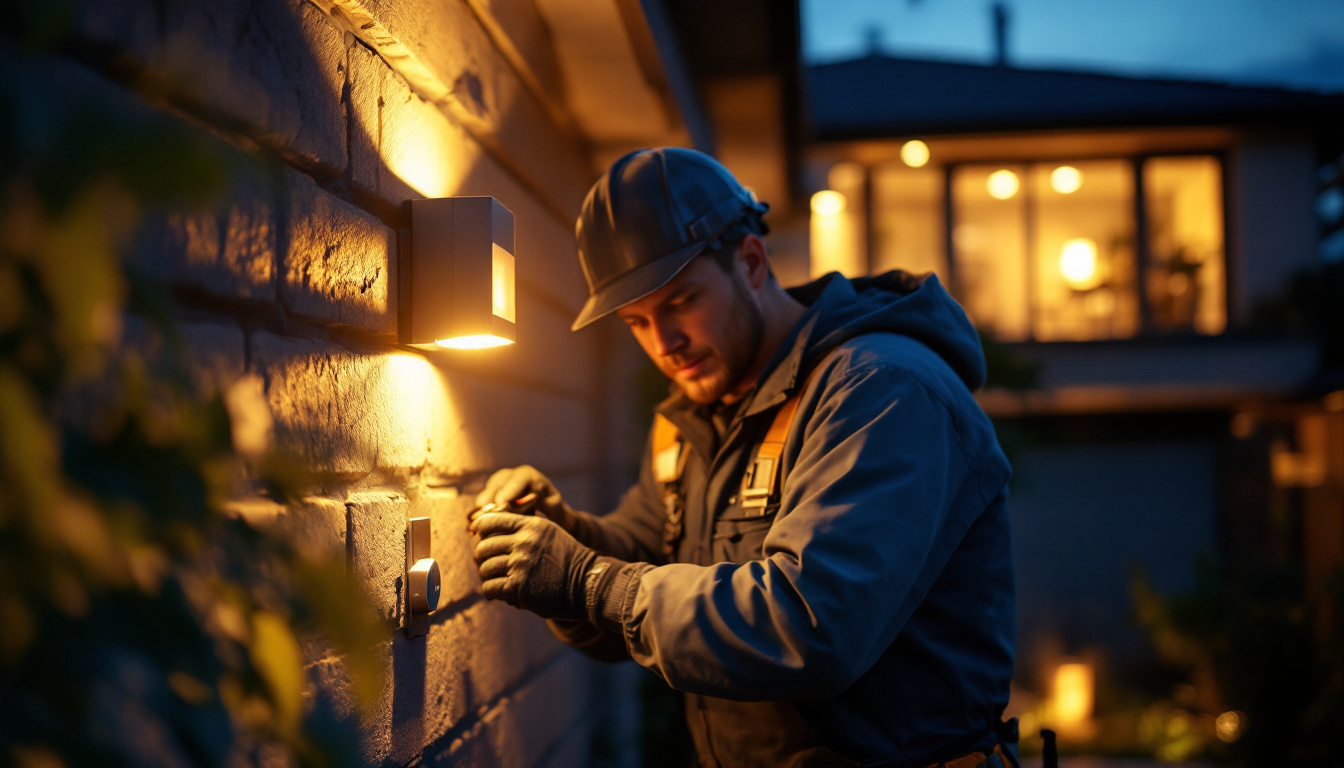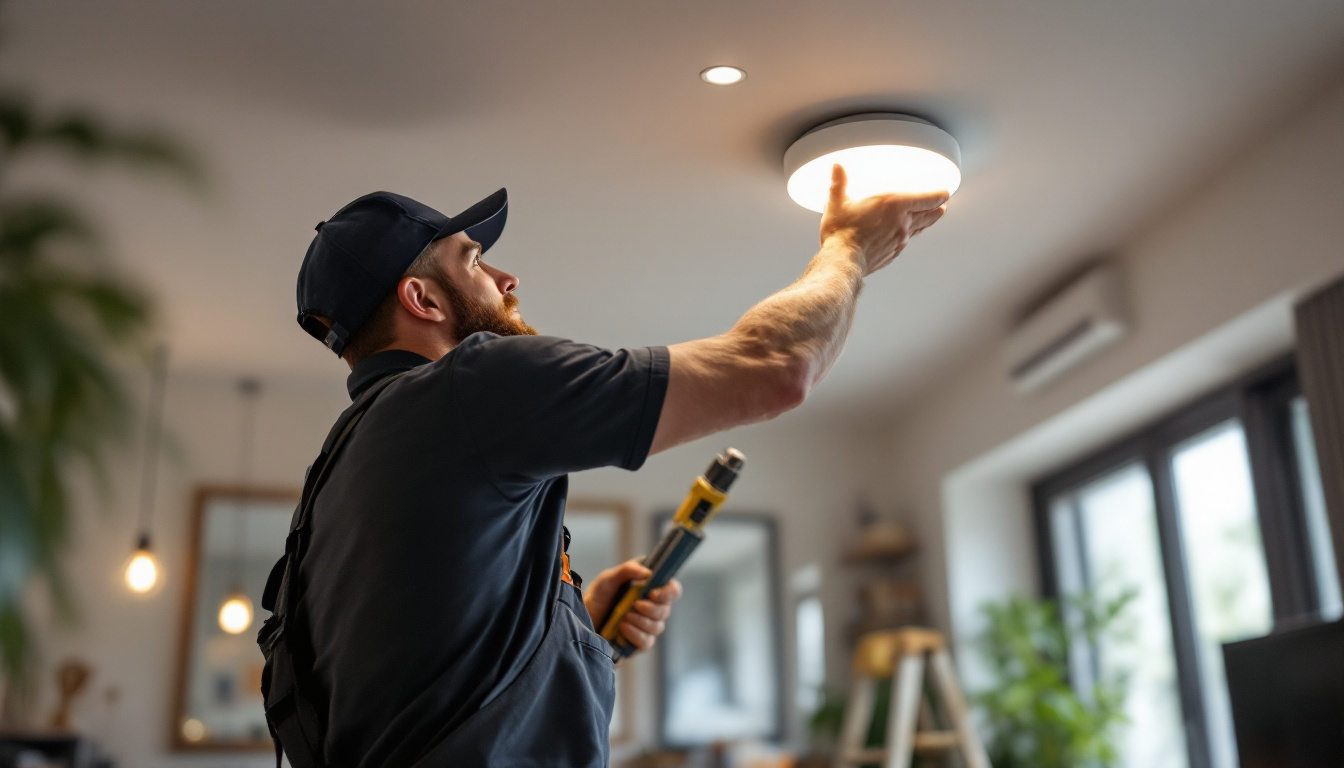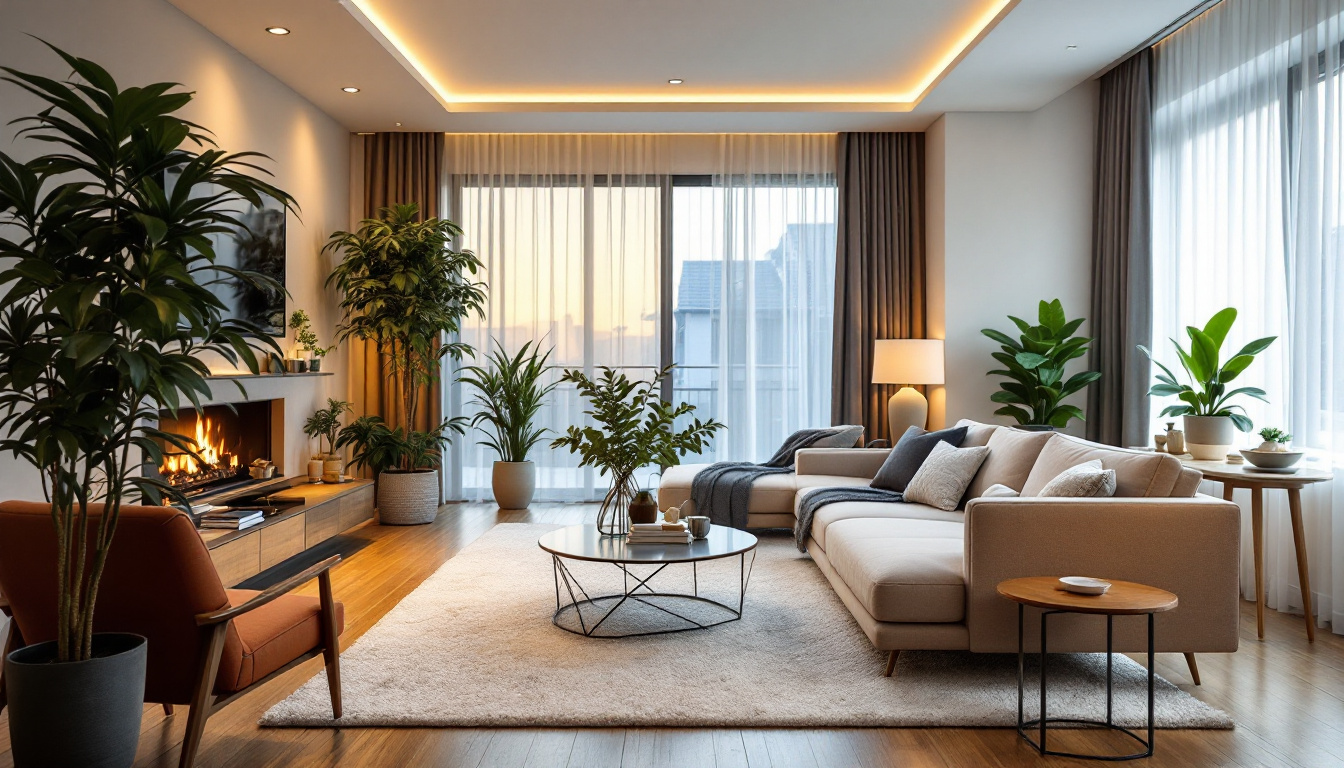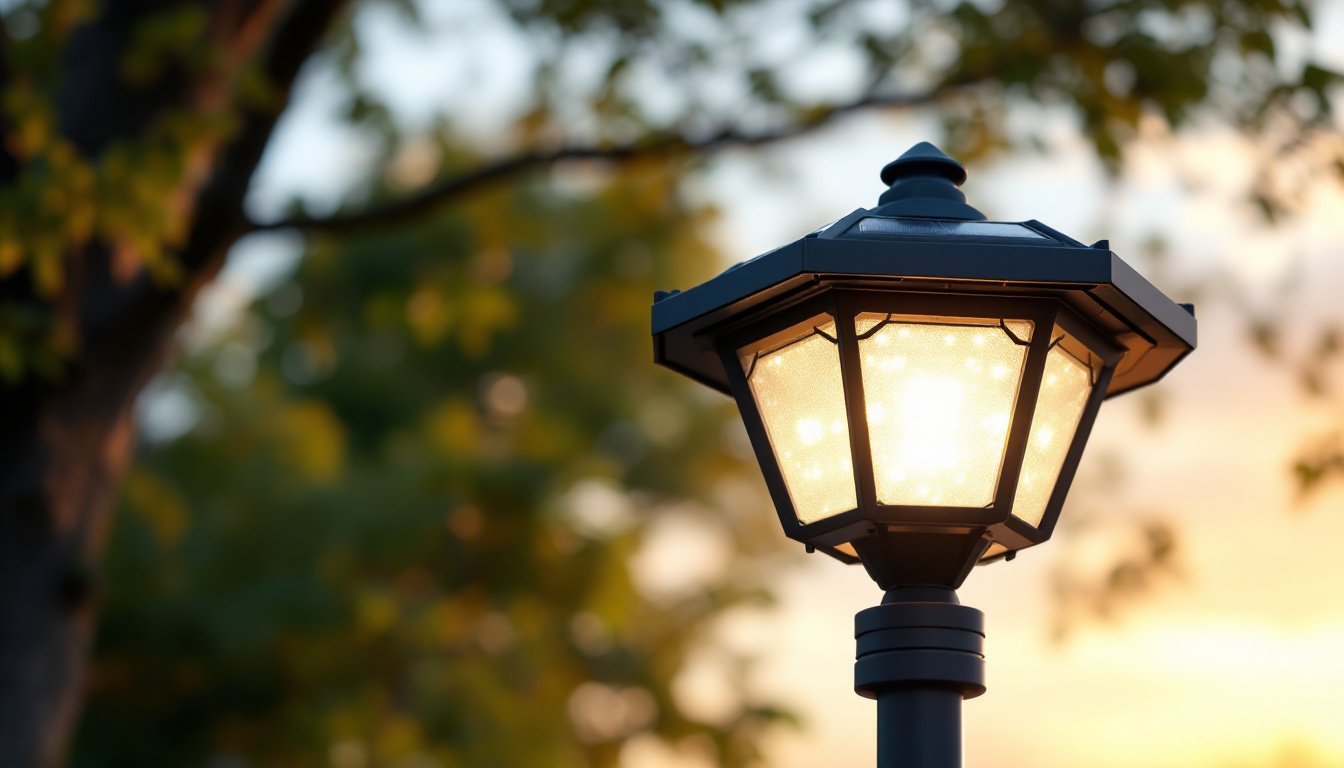
In the rapidly evolving world of lighting technology, LED motion lights have emerged as a popular choice for both residential and commercial applications. For lighting contractors, understanding the intricacies of these fixtures is essential not only for meeting client needs but also for staying competitive in the market. This guide aims to provide a comprehensive overview of LED motion lights, including their benefits, installation considerations, and best practices for maximizing their effectiveness.
LED motion lights are designed to illuminate spaces when movement is detected, making them an energy-efficient and effective solution for enhancing security and visibility. These lights utilize light-emitting diodes (LEDs) which offer numerous advantages over traditional lighting options.
One of the primary advantages of LED motion lights is their energy efficiency. Compared to incandescent or fluorescent bulbs, LEDs consume significantly less power, resulting in lower energy bills for clients. Furthermore, LED lights have a longer lifespan, often lasting up to 25 times longer than traditional bulbs. This longevity not only reduces replacement costs but also minimizes waste, making them an environmentally friendly option.
Another key benefit is the quality of light produced by LEDs. They provide bright, clear illumination that can enhance visibility in dark areas, making them ideal for driveways, pathways, and entryways. Additionally, many LED motion lights come with adjustable brightness settings, allowing contractors to tailor the lighting to specific needs. Some models even feature color temperature options, enabling users to choose between warm or cool light tones, which can create different atmospheres depending on the setting.
There are several types of LED motion lights available on the market, each designed to serve different purposes. Wall-mounted fixtures are commonly used for residential applications, providing security lighting around homes. Floodlights, on the other hand, offer broader coverage and are often employed in commercial settings, such as parking lots or large outdoor areas.
solar-powered LED motion lights are another innovative option, utilizing solar panels to charge during the day and provide illumination at night. These fixtures are particularly advantageous for locations without access to electrical wiring, offering a sustainable lighting solution. Moreover, many solar-powered models are equipped with built-in sensors that adjust the brightness based on ambient light levels, ensuring optimal performance while conserving energy.
In addition to these types, there are also smart LED motion lights that can be integrated into home automation systems. These lights can be controlled remotely via smartphone apps, allowing users to turn them on or off, adjust settings, and even receive alerts when motion is detected. This level of control not only enhances security but also adds convenience, as homeowners can monitor their property in real-time, even when they are away. As technology continues to evolve, the capabilities of LED motion lights are likely to expand, offering even more innovative features for users.
Proper installation of LED motion lights is crucial for ensuring optimal performance and longevity. Lighting contractors must take several factors into account when planning an installation project.
The placement of LED motion lights can significantly affect their effectiveness. Ideally, these lights should be installed in areas where motion is likely to occur, such as near doorways, driveways, or pathways. It’s important to consider the field of view of the motion sensor; positioning the light too high or too low can result in missed detections.
Additionally, contractors should be mindful of potential obstructions that could interfere with the sensor’s ability to detect movement. Trees, shrubs, or even architectural features may block the sensor’s line of sight, reducing the light’s effectiveness. Conducting a thorough site assessment before installation can help identify the best locations for optimal coverage. Furthermore, it is beneficial to consider the angle of approach for pedestrians and vehicles; lights should be positioned to maximize visibility while minimizing glare that could be distracting or blinding to passersby.
For hardwired LED motion lights, ensuring proper electrical connections is essential. Contractors should adhere to local electrical codes and standards to guarantee safety and compliance. It’s advisable to use weatherproof junction boxes and outdoor-rated wiring to prevent moisture-related issues.
For solar-powered options, contractors should consider the location of the solar panel. It should be placed in an area that receives ample sunlight throughout the day to ensure efficient charging. Additionally, the angle of the solar panel can impact its performance; a tilt that maximizes sun exposure will enhance its effectiveness. It’s also worth noting that the efficiency of solar-powered lights can vary based on seasonal changes, so selecting models with built-in batteries that can store energy for extended periods can provide more consistent performance during cloudy days or winter months. Regular maintenance, such as cleaning the solar panel to remove dust and debris, can further optimize the system’s functionality and lifespan.
Many modern LED motion lights come equipped with programmable features that allow contractors to customize settings according to client preferences. Understanding how to effectively program these lights can enhance their functionality and user satisfaction.
Most LED motion lights offer adjustable sensitivity settings, allowing contractors to fine-tune how sensitive the motion sensor is to movement. This feature is particularly useful in areas with high foot traffic, where unwanted activations could become a nuisance. By adjusting the sensitivity, contractors can reduce false triggers caused by pets or passing vehicles.
Similarly, the detection range can often be customized. Contractors should assess the specific needs of the installation site and adjust the range accordingly. A broader detection range may be suitable for larger areas, while a more focused range might be ideal for smaller spaces.
Another important aspect of programming LED motion lights is the duration for which they remain illuminated after detecting motion. Many fixtures allow contractors to set this duration, ranging from a few seconds to several minutes. Understanding the client’s needs will help determine the appropriate setting.
Brightness control is also a valuable feature. Some LED motion lights come with options for dimming, allowing contractors to adjust the brightness based on the time of day or specific requirements. This flexibility can enhance energy efficiency while still providing adequate illumination.
While LED motion lights are known for their durability, regular maintenance can help ensure they continue to function optimally. Lighting contractors should educate clients on basic maintenance practices and be prepared to troubleshoot common issues that may arise.
Dust, dirt, and debris can accumulate on LED motion lights, affecting their performance. Contractors should recommend regular cleaning of the fixtures to maintain optimal light output. A simple wipe with a damp cloth can often suffice, but care should be taken to avoid damaging any electrical components.
Additionally, periodic inspections of the wiring and connections are essential. Loose connections or damaged wiring can lead to malfunctioning lights. Encouraging clients to report any irregularities promptly can help address issues before they escalate.
Contractors should be familiar with common problems that may arise with LED motion lights. For instance, if a light fails to activate, it may be due to a misaligned sensor or an obstruction blocking the sensor’s view. In cases where the light flickers or operates intermittently, checking the power supply and connections is crucial.
In some instances, clients may report that the light activates too frequently. This can often be resolved by adjusting the sensitivity settings or repositioning the fixture to eliminate false triggers. Providing clients with a troubleshooting guide can empower them to resolve minor issues independently.
To maximize the effectiveness of LED motion lights and ensure client satisfaction, lighting contractors should adhere to several best practices throughout the installation process.
The lighting industry is continually evolving, with new technologies and products emerging regularly. Contractors should stay informed about the latest trends in LED motion lighting, including advancements in sensor technology, energy efficiency, and design options. This knowledge will enable them to offer clients the most up-to-date solutions.
Participating in industry workshops, webinars, and trade shows can provide valuable insights and networking opportunities. Additionally, joining professional organizations can foster connections with other contractors and industry experts, enhancing overall knowledge and expertise.
Building strong relationships with clients is essential for long-term success as a lighting contractor. Providing exceptional customer service can set a contractor apart from competitors. This includes clear communication, timely responses to inquiries, and a willingness to address client concerns.
Educating clients on the features and benefits of LED motion lights can also enhance their experience. Offering guidance on maintenance and troubleshooting can empower clients and foster trust in the contractor’s expertise.
LED motion lights represent a significant advancement in lighting technology, offering energy efficiency, durability, and enhanced security. For lighting contractors, understanding the nuances of these fixtures is essential for successful installations and satisfied clients. By staying informed, adhering to best practices, and providing exceptional service, contractors can position themselves as trusted experts in the field, ready to meet the evolving needs of their clients.
As the demand for energy-efficient and smart lighting solutions continues to grow, embracing LED motion lights can lead to new opportunities for contractors. By mastering the installation, programming, and maintenance of these fixtures, lighting professionals can ensure they remain at the forefront of the industry.
Ready to elevate your lighting installations with the advanced technology of LED motion lights? Look no further than LumenWholesale for all your lighting needs. We provide lighting contractors with high-quality, specification-grade LED motion lights at unbeatable wholesale prices. Our extensive selection is designed to meet the highest industry standards, ensuring you have access to reliable and high-performance lighting solutions for every project. Plus, with free shipping on bulk orders, you can enjoy the best value without any hidden fees or compromises. Don’t miss out on the perfect blend of quality, affordability, and convenience. Visit LumenWholesale today and discover the best in wholesale lighting at the best value.

Discover how solar-powered walkway lights not only illuminate paths but also enhance safety in outdoor spaces.

Discover why recessed lighting canisters are essential tools for lighting contractors.

Discover how replacing recessed lighting cans can transform your lighting installation projects.

Discover how solar lamps are revolutionizing outdoor lighting for contractors.